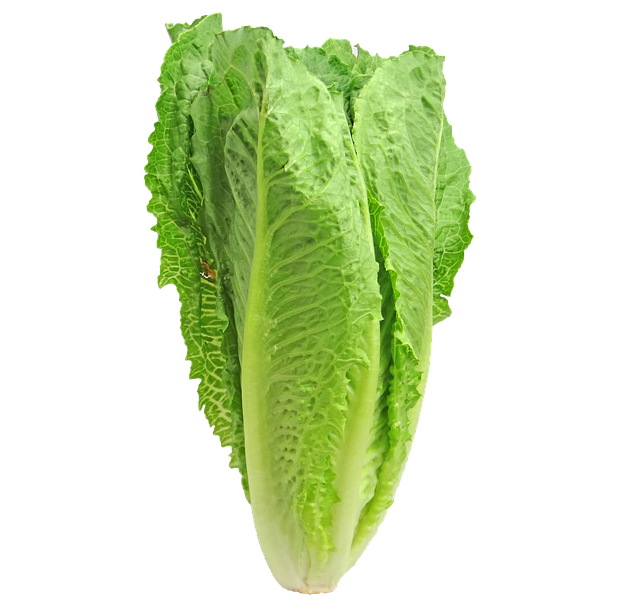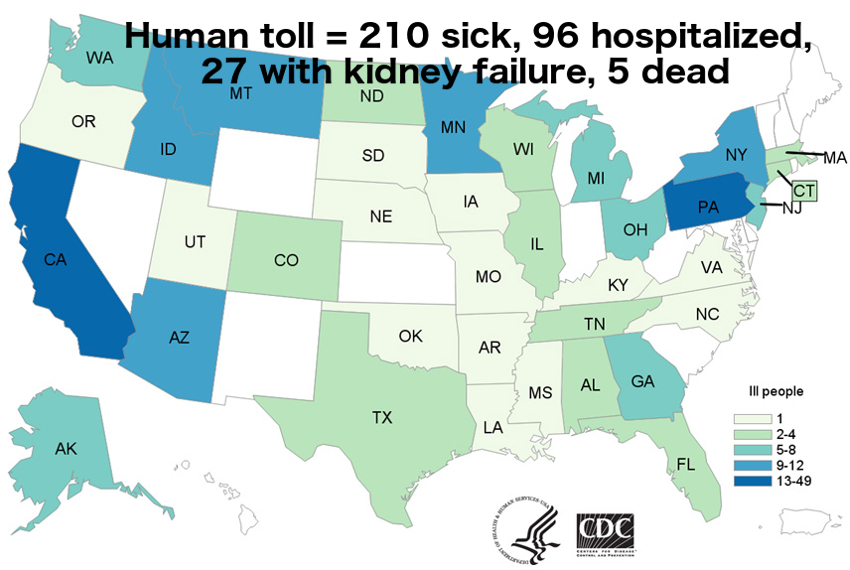It seems like every day we open the newspaper to read about another foodborne outbreak, but is our food supply less safe? According to Scott Gottlieb, Commissioner of the Food and Drug Administration (FDA), that just isn’t the case. In fact, the FDA and Centers for Disease Control and Prevention (CDC) believe food in the United States (U.S.) is safer than ever before. We are just much better at finding outbreaks when they occur.
What do the FDA and the CDC do?
The FDA and the CDC work quickly to determine the source of the contaminated food, identify the safety issues, and provide public warnings and initiate recalls of products.
The 2018 Romaine Lettuce Outbreak
 Between March and June of 2018, the U.S. experienced the largest E. coli flare up in more than a decade. Some kinds of E. coli bacteria cause disease when they make Shiga toxin. Symptoms of the infection can be different for each person but often include very bad stomach cramps, diarrhea, and vomiting. Most people get better within 5 to 7 days but for some the infection can be fatal. In the 2018 outbreak, more than 200 people got sick in 36 states from eating contaminated romaine lettuce. 110 people were hospitalized. Five people died.
Between March and June of 2018, the U.S. experienced the largest E. coli flare up in more than a decade. Some kinds of E. coli bacteria cause disease when they make Shiga toxin. Symptoms of the infection can be different for each person but often include very bad stomach cramps, diarrhea, and vomiting. Most people get better within 5 to 7 days but for some the infection can be fatal. In the 2018 outbreak, more than 200 people got sick in 36 states from eating contaminated romaine lettuce. 110 people were hospitalized. Five people died.
Food supply chain and foodborne illness
To assure our year-round supply of salad, food travels through a complex network of suppliers and distributors. The outbreak can not be traced back to a single grower, harvester, processor or distributor. But all of the farmers of the contaminated lettuce grew in the Yuma Arizo na Region. This region is the source for the vast majority of the nation’s winter lettuce and other leafy greens. The CDC and FDA learned that pre-cut lettuce packages often contain lettuce from multiple sources making finding the source of the outbreak even more difficult. By the end of June 2018, the FDA and CDC found the same genetic strain of E. coli as the outbreak in an irrigation canal that supplies many of the ranches.
na Region. This region is the source for the vast majority of the nation’s winter lettuce and other leafy greens. The CDC and FDA learned that pre-cut lettuce packages often contain lettuce from multiple sources making finding the source of the outbreak even more difficult. By the end of June 2018, the FDA and CDC found the same genetic strain of E. coli as the outbreak in an irrigation canal that supplies many of the ranches.
When a contamination happens, an outbreak can affect people from Alaska to Florida and everywhere in between. Imported foods rely on even more complex supply chains. The U.S. imports food from approximately 200 different countries, including 90 percent of our seafood and at least 50 percent of our fruit, depending on the season. Despite continued efforts to ensure the safest food supply possible, foodborne illness affects nearly 50 million people annually. Or about one in six Americans. Of these, an estimated 128,000 people are hospitalized and 3,000 die each year. These numbers are tragically high.
What can you do about it?
While we know we can’t stop foodborne illness completely, the numbers underscore the need for us to do much more. Consumers should always practice safe food handling and preparation measures. Consumers should follow these simple steps:
- Wash the inside walls and shelves of the refrigerator, cutting boards and countertops; then sanitize.

- Wash hands with warm water and soap for at least 20 seconds before and after handling food.
- Wipe up spills in the refrigerator immediately and clean the refrigerator regularly.
- Always wash hands with hot, soapy water following the cleaning and sanitization process.
- Persons who think they might have become ill from eating potentially contaminated foods should consult their health care provider.
- Keep yourself informed about outbreaks and food recalls.
Consumers who have symptoms of e. coli infection should contact their health care provider to receive care.
The U.S has one of the safest food supplies in the world. This is true despite the fact that we also enjoy one of the world’s most abundant, diverse, and complex food supplies.


Great post and reminder about washing hands